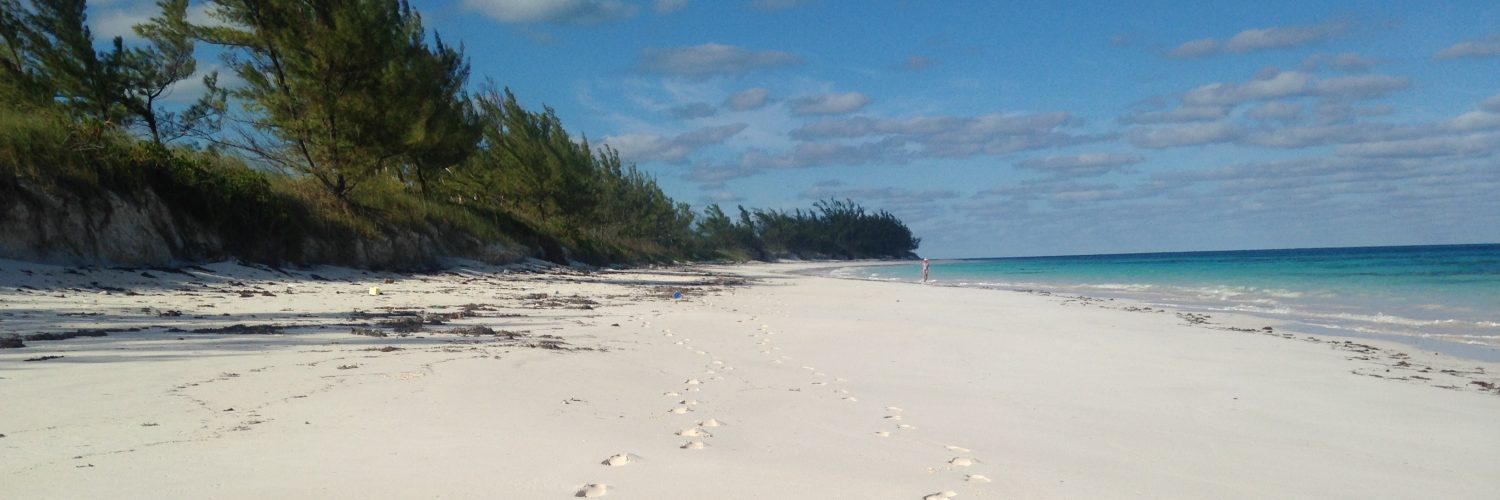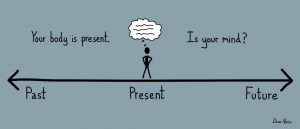We hear about Mindfulness and Meditation all the time; on social media, in the news, at the doctors surgery and in the workplace…but where do you start if you haven’t tried it before?
Meditation and Mindfulness are founded on some of the simplest practices that have been relied upon for centuries by cultures that truly understood the real benefits of a meditation practice.

Although some of the practices are very simple, they can be very difficult. It’s understandable that most people read articles and think “I should learn to meditate” or “I know I’d benefit from mindfulness” but many don’t actually take the plunge. Part of that is availability, part of it is knowing where to start (what to try?) and what the experience might be in a class or group meditation.
Why not start with The Well Nest?
At the Well Nest we run Mindfulness & Meditation sessions through the week , evening sessions, courses and workshops in relaxed and welcoming environments. No experience is necessary; just come with an open mind and a willingness to learn a practice that could change your life. At the Well Nest we focus on delivering simple and effective teachings and practical meditations that you can take away and practice in daily life, right from the first session.
You are welcome to start your journey with us this month as we launch new Lunchtime Escapes in Stafford – 45 minutes of Mindfulness and Meditation on Tuesdays and Thursdays at the new TopLine Studio on Stafford Street. An opportunity to try something new that could last life time and make a real difference to your quality of life. Or, why not join us to learn the art of Mindful Walking in the beautiful surrounds of the Wolseley Centre on 25th May.
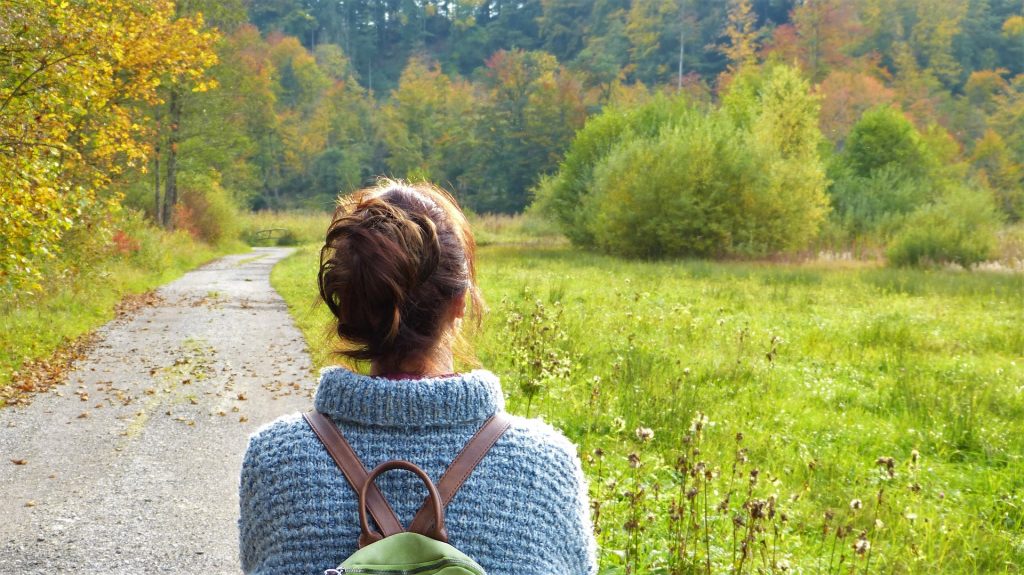
The benefits of a Mindfulness & Meditation practice
The benefits of a regular meditation or Mindfulness practice are well documented: here are just a few…
- lower stress levels
- reduced anxiety
- better sleep quality
- improved mental resilience and overall mood
- better overall wellbeing
- less instances of heart disease
- less instances of respiratory illness
- Improved blood pressure
- Improved relationships….
It’s time to make this May, your meditation month. Join us and learn a practice that could truly benefit your life and free your mind.
New Year Mindfulness Courses
New year’s resolutions don’t tend to last too long, even with the best of intentions. This year try taking a mindfulness course that can give you the skills to make a change that can last for life.
Learning how to practice mindfulness can have many benefits:
- calm the busyness of the mind and find peace within
- reduce anxiety and stress
- improve relationships with others
- develop patience and compassion for others

8 session Mindfulness Practitioner Courses are now available with The Well Nest. Courses start on 23rd January at Colwich & Little Haywood Village Hall.
For full course details, see the mindfulness tab or book online via the events tab.
A Mindful Christmas
The Christmas period is often a time of increased tension, stress or anxiety for many and can result in unpleasant experiences for individuals or families. Spending an extended period of time with friends and family doesn’t happen very often, so it would be beneficial for all if we were able to approach the festive season with a peaceful mind.
What causes stress at Christmas?
Mindfulness shows us that the struggles we go through in life often aren’t external to us (as we believe them to be) but are instead based in our perception and thoughts/beliefs about a situation. Most of us feel the pressure to get the right gifts for the right people, spend enough money but not too much money, make sure everyone has enough food and drink, wear the right outfit, attend the right events or parties, not drink too much,…and inevitably find time to demonstrate the right amount of merriment on social media…
A lot of the pressure we experience during the festive season can be found in our thought patterns or learned responses. Thoughts of how things should be and comparison to ideals or others can be harmful. If we tune into the present moment (no pun intended) and observe our true experience in the moment, we may find that we are able to enjoy the season more than previously. If something does go wrong – the turkey is dry, you couldn’t get that last minute gift because it had sold out – you can use mindfulness techniques to bring yourself back to the moment instead of getting caught in unhelpful negative thought patterns.

Tips to move mindfully through the festive season
A mindful queueing experience: You can’t avoid them, there are queues in shops, in supermarkets and on the roads this time of year. Every year we know it will happen the closer we get the Christmas, but every year we find ourselves frustrated, tense, irritated and sometimes infuriated with the constant waiting. Battling against the flow of life is a great source of stress for us. If we catch ourselves as frustration arises and instead of letting it take hold, we bring ourselves to our immediate experience of the moment. No judgment, no likes or dislikes, just observation. What does impatience feel like? Where is it held in the body? Try to feel it rather than think about it with the usual ‘why is this taking so long?’ ‘I should have joined the other queue’. You will notice almost straight away that tension eases out of your body and impatience gives way to patience naturally.
3 minute breathing space: When things get really testing (either during the build-up to Christmas day or during a family gathering for example) we often say things we regret or experience anger with ourselves or others. When we feel that a situation is getting too difficult, we can take 3 very effective steps to transform the moment mindfully.
- If you feel anger, impatience or frustration arising, catch it as soon as you are able and stop yourself from speaking or acting negatively. If you need to remove yourself from a situation, you can do so.
- Ground yourself in the moment by tuning into your breath. If you are agitated, try taking long slow breaths for a few minutes to give yourself space.
- Pay attention to what you are experiencing. Try to feel it in the body instead of listening to your thoughts about a situation or person. Bring your awareness back to the moment and your direct experience of it. Try to bring awareness to how a situation affects everybody, rather than just you.

Reclaim time: We always run out of time at Christmas. Not enough time to finish the shopping, wrap the gifts, visit friends and family, finish things off at work before the break. The constant rushing and pressure to ‘people please’ often leaves us more tired after the Christmas holiday than before it. This year, make a little time for yourself. The pressure we feel is often self-applied, so take a load off. It doesn’t have to be extravagant, but a little mindful self-care can go a long way. Take a walk outside and take in all that nature has to offer this season. Take a long bath with some essential oils. Read a new book. Find opportunities to bring yourself and your experience back into the present moment as often as possible instead of living in an imagined future or re-living a past event.
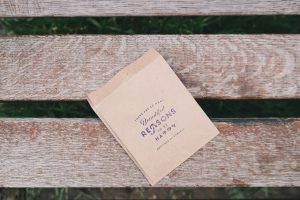
Christmas is the perfect time to practice gratitude; not just for the gifts given and received, but for all the fortunate things we experience in life that often get swamped by thoughts of how life should be or what we should have achieved ‘by now’. Take a few moments each day to list the things you are grateful for…I bet that list is much longer than your Christmas wish list.
The Season to Try Mindful Walking
The changing of the seasons from summer to autumn is a favourite time of year for many. The turning leaves and the activity of wildlife can be a feast for the eyes if we get the opportunity to go outside. It may also signal the onset of SAD for many, from the darker mornings and evenings and less time to appreciate the daylight.
One way to improve mood and cultivate mindfulness, which can help through the darker months, is to practice mindful walking. Taking the time to tune into our bodies and our environment can bring a new appreciation for the colder months and can lift the mood enormously.
Mindful walking doesn’t mean taking a hike through the countryside however. It can be practised anywhere; in nature, during the commute or even indoors.
So what is it?
Mindful walking can take many forms but largely falls into one of two categories (or a mixture of both): body awareness and environment awareness. To practice body awareness, we can move with the breath, observing the natural breathing pattern or tuning the breath into each step taken. With environmental awareness, we move steadily but turn our attention to our sensory experience of the environment. What we can see, hear, smell, feel etc. The important thing to remember, mindful walking is not about travelling from A to B, it’s not about getting somewhere. It’s about fully experiencing the present moment through the action of walking.
How to do it
Body Awareness
- Start walking at a slow and steady pace. Try to match your steps to your breathing but keep the breathing pattern natural rather than extending the breaths.
- You can hold your hands and arms where they are comfortable – at your sides, behind your back, wherever you like
- Get used to this pace as you walk around your garden, around your house or along the street – wherever you choose
- Start to bring your awareness to the feeling of your feet touching the ground. The contact points at various moments of each step. Notice how your arms move. Notice the sway of your hips and your balance as your step from one foot to another. Notice how you hold your head and shift your gaze as you walk.
- If you get distracted, gently bring your attention back to the awareness of your body in motion
- Try mindful walking for 10 minutes and as you finish, pause for a few moments and set an intention to take mindfulness into the other activities of your day.

Environment Awareness
- Start off following the first three steps as for body awareness above
- When you are walking with the breath at a comfortable pace, start to shift your awareness to what you can see. Raise your eye level to take in your surroundings fully. Notice the shapes, colours and textures of the things in your environment. Really take in the details.
- Next move to what you can hear; the breeze, trees rustling, birdsong, vehicles, people talking, machinery – whatever it is, really pay attention to the sounds in the moment
- Move on to what you can smell and feel. Use your senses fully to anchor yourself in the present moment.
- If you get distracted or carried away by thought, just bring yourself back to the sensations of the moment as you steadily continue to walk.
- As you finish, set yourself a mindful intention for the day.
As you become more experienced at mindful walking, you can try increasing the pace (if you want to) so that you can move mindfully wherever you are going. Otherwise, you can keep mindful walking as a formal practice that you make time for each day.
Mindfulness in sports
Mindfulness is the practice of applying awareness to the present moment through sense-based experience rather than thought. In other words, the ability to bring attention to what is happening right now, without imposing judgments on the quality or meaning of the experience. In practicing mindfulness, sportspeople are able to notice thoughts as passing mental events that don’t require action. The ability to observe in this way can lessen the reflex response to a situation and increase the ability to respond in a calmer more objective way.
We often remember the sporting outbursts (John McEnroe, Zinedine Zidane to name but a few) where players are overcome with rage, feelings of injustice or unfair treatment, or respond negatively to crowd interference. With athletes not only needing to consistently turn in their best performance, but also being role models for fans and aspiring young people, changing the way individuals react to thoughts is a growing area of focus in sports.
A Chosen Response
It is not just the one-off outbursts that sportspeople have to contend with; performance anxiety is a large factor whether you are a team player or individual athlete. So how can mindfulness help? Mindfulness can help individuals become aware of their thoughts, bodily sensations and environment. Through noticing as an observer what is happening in the present moment, we can choose to respond in a certain way instead of relying on the reflex, learned response that often isn’t the most helpful.

We can choose to notice the environmental conditions and make adjustments to our play. We can notice how certain scenarios cause tension in the body and we can choose to relax those parts of the body. Or, we can just notice as an observer and watch the feelings or thoughts arise and pass away – they are mental events that don’t necessarily need a reaction; especially where the thoughts are unhelpful or negative or likely to elicit a negative response. Sport can be a very stressful environment. Mindfulness can help individuals to let go of emotional responses and instead help them to act with more balance and wisdom; this could be the difference between winning and losing.
Improving Focus
Often in competitive sports (professional and amateur) it’s easy to ruminate on past mistakes or predict an outcome before the performance has even started. Mindfulness brings us back to the present moment – what is happening right now? By focusing only on what is happening in the moment, thoughts of predicted failure or learned reactions to past events start to lose their power. Our minds and bodies find a freedom to perform in the moment.

As an amateur competitive cyclist, I have felt and witnessed performance anxiety and the effects it can have on the enjoyment and outcome for individuals. It’s easy to slip into the mental cycle of berating yourself for not doing well, or having moments of self-doubt. Mindfulness might not stop these moments, but it will teach you how to observe them purely as mental events and not based on the reality of the moment. Bringing yourself back to the present and anchoring attention on your breath is a powerful practice to overcome attachment to negative thought patterns. Trying a simple breathing practice before an event can reset the mind and body to be able to focus productively on the current situation.
Positive Imagery
Mindfulness is a powerful method for creating space in the mind which can then be used to meditate on positive visualisations. Utilising the senses can affirm visualisations bringing them to life with vividness that can overcome anxiety and negative thought patterns. Creating a positive mental image of a shot, play, race or outcome can help increase confidence and focus making mindfulness an essential practice not only for success, but also for enjoyment.

Practicing mindfulness is mental training that helps refocus awareness so that attention can be redirected purposefully to help you perform to the best of your ability. As with all training, it is a process that requires commitment and repetition. Mindfulness begins with a sitting practice and deliberate times set aside for mindful enquiry. This then moves on to mindful movement and can become a whole of life practice that can be utilised on the court/pitch/field/track before, during and after performances.
The Well Nest could help your sports team to improve performance through the practice of Mindfulness. To learn more about mindfulness, tailor a mindfulness package for your club or team or to register for mindfulness courses in Staffordshire (suitable for everyone, not only athletes) take a look at the Mindfulness pages or contact [email protected]
Letting go of the past
Letting go of the past will be an issue for most people at some point in their lives. We can all remember hurtful things that were said to us decades ago, or bad experiences that we (knowingly or unconsciously) allow to affect our future experiences. I think we would all agree that being able to let go of the past would provide us with more space in our minds and more peace in our lives.
So how do we do it? It comes back to basic mindfulness principles of being in the present moment, using an anchor to keep us there and staying intentionally and without judgment.
Something that should help us gain some perspective on letting go is that the past has already been and gone; it has been let go of already. What our mind is holding onto is attachment to an event, thought, experience or occurrence from the past. It’s that attachment that stays with us and effects our mind over and over again. When we go into the ruminative state, we run the past (or an imagined future) over and over in our minds. Neither the past nor the future exist; it’s just our thoughts that disturb the mind.
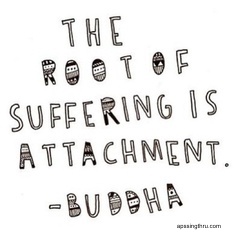
If we repeatedly bring ourselves back to the present moment, our mind will start to learn not to dwell in the past and slowly we will let go of attachment or harmful/negative thought patterns that seem to have power over us. One of the best anchors that we can use in our practice of letting go is the breath. It’s always with us and accessible at any time. Bringing awareness to the breath frees the mind from the past and brings it immediately into the present moment. A simple breathing meditation can be used any time, any place and can provide immediate relief from unhelpful thoughts based on the past. By being in the present moment, we are forced to let go immediately of our attachment to the past. The process won’t be easy and it will take time to be free from attachment to the past for longer than a few moments, but practising bringing ourselves back to the present moment will train the mind to let go.
If the breath doesn’t work for you, or your thoughts prove a stronger anchor than observing the breath, you can try a sense based mindfulness practice; using what you hear, see, smell, feel etc in the environment at that moment to keep you in the present.
Using mindfulness to break down attachment stems from Buddhist teachings and practices that have worked for providing mental calm and clarity for many hundreds of years. The Buddhist tradition that I follow very much focuses on making Buddhist teachings practical and accessible for the modern world. Applying traditional mindfulness techniques in practical ways means the application of this ancient knowledge is relevant to helping us solve our modern problems.
Try something old; to find something new.
A Mindful Holiday
 We all love to ‘get away from it all’, ‘leave our troubles behind’ and enjoy a holiday (maybe several if we’re lucky) each year. We have a plan of where to go, what to see, what to do and even the places to eat, the number of hours we want to spend on a beach, the sights we want to tick off our ‘to do’ list. For how much of our holidays are we actually present? Really present…paying full attention to what we’re doing in the moment, not thinking about the next thing we’re going to do or how what we did this morning perhaps wasn’t as great as we thought it would be.
We all love to ‘get away from it all’, ‘leave our troubles behind’ and enjoy a holiday (maybe several if we’re lucky) each year. We have a plan of where to go, what to see, what to do and even the places to eat, the number of hours we want to spend on a beach, the sights we want to tick off our ‘to do’ list. For how much of our holidays are we actually present? Really present…paying full attention to what we’re doing in the moment, not thinking about the next thing we’re going to do or how what we did this morning perhaps wasn’t as great as we thought it would be.
We all hope that a trip away will be the ideal escape from work, from stress, from real life. As soon as we recognise that physically moving out of the sphere of our troubles or busyness doesn’t actually rid us of those things, then we can get the most out of our breaks and life generally.
Happiness and peace of mind can occur anywhere at any time, as long as we are in the present moment, paying attention, on purpose.
Paying attention
We can get the most out of our holidays by simply paying full attention to what we’re doing. I enjoy driving in continental Europe, and I think it’s because I pay so much more attention to the task of driving than I normally do. I’m constantly watching, listening, feeling the roads. My focus is fully on the task…and it becomes enjoyable. My mind is not on the destination and what I’m going to do when I get there…it’s just on the very moment of driving.
Pleasure and peacefulness can be found in many places that might usually frustrate us when we’re on holiday. Being stuck in traffic might seem like a waste of time leading to frustration or irritation, but it’s also a great opportunity to people watch, to observe the real life of another country or culture, to take in the sights and sounds of the places we pass through.
How to holiday mindfully
So, you’ve paid a lot of your hard earned money for a break – how do you get the most out of it by using mindfulness? There are a number of top tips for this…
- Walk as often as possible. This could be to get from A to B or to explore an area or just to get to the shops or beach. Leave the car behind. Being on foot gives you endless opportunity to practice mindfulness. Feel the ground under your feet, listen to everything you can hear in the moment; the language, the breeze, music, traffic, life going on right now. Focus on taking in life as it happens in the moment. When you are outdoors under your own steam, there is so much going on to focus your attention on now. If you aren’t able to walk, spend some time sitting outside and let your senses fully take in the environment.
- Use your senses. Don’t just look at things, take a picture and move on. We are very visual by nature and that’s fine, but we have 4 other senses to work with. Listen to what’s going on, what does the city/forest/beach/mountain where you are sound like? Think back to your last holiday – if someone asked you to describe what your destination sounded like, would you be able to do it? Similarly with smells, we only notice the extremes of good or bad. Try to focus in on the smells of the sea air, the leaves and vegetation, the traffic, any animals nearby, food cooking etc. All these things bring you into the present moment so you create stronger memories and find more peace, more genuine ‘escape’ from busyness. The same approach works with taste and touch; use all your senses to bring yourself into the present.
- Use photography differently. In the age of social media, we carefully construct or contrive images to draw the most appreciation from strangers. Try taking photographs of real moments, real life. Take photos that draw your attention to what your senses (other than sight) are experiencing. Create memories of touch sensation, smell, sound etc. In the present moment, it will draw you right into focussing on now, but later, your images will also serve as mindfulness cues that you can rely on in everyday life.
Remember, the core of mindfulness is to be present, whether that’s on holiday or at home. We often feel obliged to pack in as much as possible when we’re on holiday as it only happens a few times a year. Try to move from ‘doing’ to ‘being’. Don’t just pass through life, really live it.
The Importance of Wellness at Work
Workplace wellness programmes are well worth the time and effort invested in them. The success record of companies offering these programmes indicates that an employee who is happy and healthy is more productive and motivated, stays away from work due to illness less often and remains employed with the company for a longer time.
Are you aware of a wellness programme in your workplace? Would you like one?
I’ve worked in a lot of industries and for a lot of companies of different sizes over the years. I haven’t yet encountered any consistency in relation to employee wellness, but I do think that each and every one of the employers I have worked for would undoubtedly say that their employees are the greatest resource and asset to the company.
Most large companies have an IT support team, an estates and facilities team, a grounds maintenance team…all looking after the assets of the business. How well does the Human Resources team look after the employees?
You have probably been offered training, access to conferences and events, possibly social events organised by the company. You may or may not have access to a good annual leave entitlement and additional benefits in the form of discounts or vouchers for products and services…have you ever been offered access to mental health or wellbeing services (importantly, without fear of stigma)?

A workplace wellness programme demonstrates to employees that the employer recognises and cares about their health. Let’s face it, we’ve all had time off due to poor health. If there was a programme available to address mental and physical wellbeing, the morale and engagement of staff would increase and time off decreases – it’s win/win.
A great number of illnesses can be reduced or avoided through lifestyle change. As we spend the majority of our time at work, it makes sense that some of the lifestyle changes should be accessible or incorporated into our working life. Access to a quiet and contemplation room, guided meditations, mindfulness courses, relaxation classes, yoga, pilates or Tai Chi classes could make a massive difference to staff wellbeing and productivity. The feeling that you are valued at work makes a real difference – and this isn’t just reflected in the pay slip.
Here are some of the benefits that can come from a workplace wellness programme:
- Improved focus and concentration
- Better physical strength and stamina (less of the aches and pains from sedentary working)
- Increased job satisfaction and a feeling of being valued
- Better relationships with colleagues
- Lower staff turnover (reducing training costs) and greater job satisfaction
- Reduced absenteeism
- Positive corporate image
A wellness programme can be designed to fit around your resources, time, business and employee needs. The benefits to employees and the business can be enormous. Here at The Well Nest we can work with you to offer yoga and mindfulness packages to benefit the physical and mental health of your employees and return those benefits to the business.
To find out more contact [email protected] or visit the Workplace Packages page.
Mindfulness Courses Now Available
Mindfulness is a practice of widening our awareness and insight so that we can live in the present moment without judgment. The ability to watch our minds and the busyness within as an observer rather than through grasping onto thoughts, allows us to experience a greater freedom and peace of mind. The skills of mindfulness can be used in daily life to reduce stress and anxiety, be more productive and develop better relationships at work and at home and lead to a greater sense of physical and mental wellbeing.
The following mindfulness courses are now available in Stafford:
Introduction to Mindfulness—single session course (£25)
Available on the following dates from 6 pm—8 pm:
Tuesday 6th February
Tuesday 13th February
Eight Session Mindfulness Practitioner Course (Introductory offer price £130)
Course starts on Tuesday 27th February and runs weekly with one home practice week at week 5. Each session runs from 6 pm—7.30 pm.
Courses are held in a town centre location with nearby parking. Course materials will be provided.
For more information, visit the Mindfulness tab
Silent Retreat – should you try it?
If you’ve seen Eat Pray Love you know one of the benefits of silent retreat is a fabulously smooth and relaxed throat from giving it a rest. But, do the benefits go deeper?
We’ve all heard the stories of monks and nuns spending years in silence to achieve higher spiritual realisations, but unless you live in the mountains of Tibet, this isn’t really an option in our busy modern lives. One way to try the silent treatment is to go on a short retreat led by an experienced teacher who, periodically, can offer guidance on meditation and how to make silence your friend.
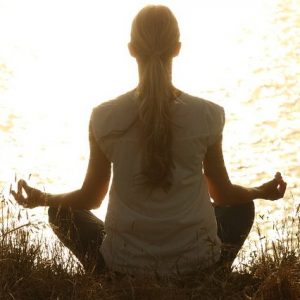
What Silent Retreat Looks Like
When I went on retreat earlier this year, I really had no idea what to expect from the period of silence. It sounds so simple…so simple that I thought it would almost certainly be a waste of time. I was wrong. We started the day on our meditation cushions with some mindfulness of breathing (a simple breathing meditation that usually starts off a period of meditation) and brief guidance from the teacher. We were then instructed that we should try to maintain mindfulness through breathing, sensory experience, body scan and mindful movement for the morning session of approximately 2 hours. There would be a short break, but no talking throughout.
Although I’ve been meditating and practicing mindfulness for over 6 years, this was by far the longest I have spent in meditation. I was daunted, but remembering my mindful practices of non-attachment, I just went for it! I can honestly say that by not having any expectations before the day, it actually helped me to just sit and see what happened. I experienced some mind wandering (obviously) but also achieved the longest period of peace and inner calm than I have ever previously achieved. This was done through listening to the environment – really letting the sounds of ‘now’ into awareness. I don’t mind admitting that I have struggled to have peace of mind for any great length of time over the years, but the benefits of any peace of mind are liberating to say the least. It was interesting to note on silent retreat that even when we were permitted to speak, nobody took up the offer. I also confess that there was a border collie in residence at the retreat and I may have forgotten myself and said hello to him…but I think he kept my secret.
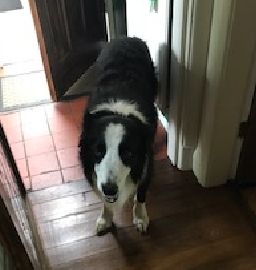
The afternoon continued for another lengthy period of silence; around another 2 hours. Luckily the weather was good enough for mindful walking outside. It was interesting to note that people definitely preferred to stay in their own company drifting off to various corners of the retreat centre and garden, making no eye contact; as though when one kind of social interaction was off limits, all kinds were off limits. It was increasingly difficult to find lengthy periods of peace of mind throughout the day, but when concentrating for such long periods, attention does wander. I tried not to give myself a hard time over this. All participants reported different experiences: some really enjoyed it, others struggled. Spending time alone and in silence is a massive challenge for some personality types. Another reason why it’s so important to let go of judgment and move towards kindness.
What to ‘expect’ from yourself
Silent retreat isn’t easy. It’s a test for experienced meditators and can easily lead to frustration. It’s important to have a solid meditation practice before attempting silent retreat to get the most out of it. There isn’t much time for instruction, no guided meditation and no questioning so you need a full quota of practices to try out through the day/s.
You will find you become tired. It will definitely test your patience. You will have positive and negative thoughts and of course general busy-ness in the mind. That’s all ok! Try to welcome everything and push nothing away. We can place an expectation on ourselves on silent retreat that there will be some kind of breakthrough in our practice. This expectation is something that should be released as soon as possible. Holding onto expectation fuels attachment which definitely gets in the way of awareness. It should be approached the same way as any mindful meditation; without attachment to thought, without agenda and without the need for an outcome. I’d had this retreat booked for about 6 months in advance (people clearly queue up to not talk to each other) so it helped that I had no plans other than to be at the retreat. I had nothing to do but be there – how often does that happen in modern life!?
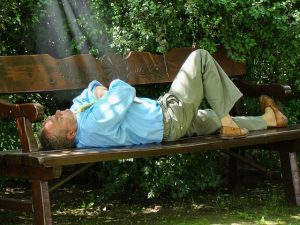
Above all else, remember to be compassionate and kind towards yourself…it’s the key to progress. I think this retreat advanced my practice by giving me a good length of time to practice in isolation. Without the distractions of everyday life and the pressing demands on my time I could really let myself be at ease with meditation. Silent retreat really does feel like a journey (cliché I know) but it’s true! All emotions are experienced. It’s definitely something I’d recommend and it’s certainly something I will be doing again.

